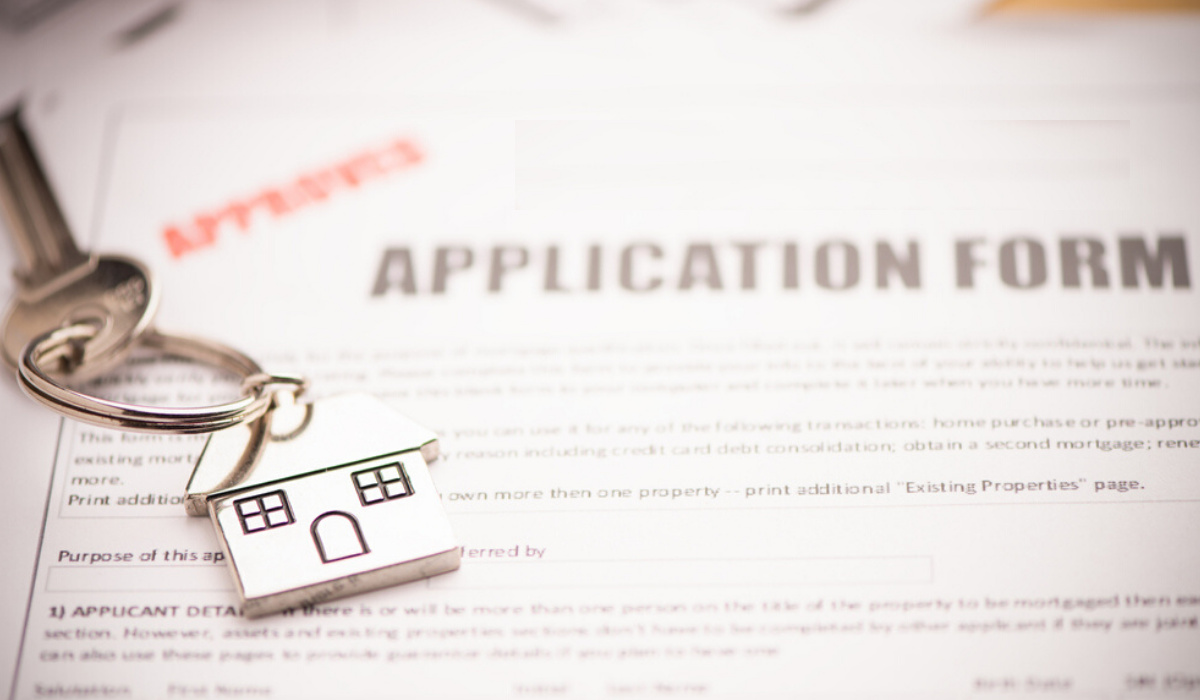In September 2015, the Delhi Development Authority (DDA) introduced an online system to make property conversion more transparent and efficient. This system allows people who own DDA flats or are part of group housing projects to start the conversion process, whether they are the original allottees or hold a power of attorney.
As of August 13, 2020, this online service was expanded to include land owners. Now, plot holders can also apply online to convert their property from leasehold to freehold (e-conversion) or extend their time (e-EOT). Applications are processed in the order they are received, and applicants can track their status online in real-time.
DDA property conversion scheme: Key points
Eligible flats
- Includes Janta, EHS, LIG, MIG, HIG, and SFS flats allotted by DDA.
- Also covers flats in the Asian Games Village Complex built before 1992 on leasehold basis.
Discounts
Original allottees may receive discounts on conversion charges as listed in Annexure-“A”.
Conversion charges
One-time charges for converting from leasehold to freehold are detailed in Annexure-“B” for cases involving purchasers or attorneys.
Application process
Submit your application along with the required documents to apply for conversion to freehold.
Mortgaged flats
If your flat is mortgaged, you need a no-objection certificate from the mortgagee or financial institution to process the conveyance deed.
Legal disputes
If there’s a legal dispute over the title of the flat, conversion cannot proceed until the dispute is resolved.
Pending applications
If there are pending applications for mutation or submissions with DDA, the conveyance deed will only be processed after these issues are resolved.
Possession and power of attorney
If you’ve transferred possession of the flat:
- The person with power of attorney or agreement to sell can apply for the conveyance deed.
- Proof of possession must be provided.
- If there are multiple powers of attorney, ensure proper documentation linking the original allottee to the final purchaser is submitted.
- General Power of Attorney or Agreement to Sell dated September 24, 2001, must be registered with the Sub-Registrar.
Application handling
Once your application is received, it will be processed by the relevant branch.
GPA/PoA complications after 2011 Supreme Court ruling
Applicants relying on a General Power of Attorney (GPA) or Agreement to Sell (PoA/ATS) need to be aware of important legal changes. In October 2011, the Supreme Court ruled that GPA sales do not amount to ownership transfer. This means a GPA holder cannot claim full ownership rights over a DDA property simply on the basis of a power of attorney or sale agreement.
For DDA’s freehold conversion process, this ruling has specific implications:
- Only registered documents accepted: DDA generally processes conversion applications from GPA/PoA holders only if the GPA or Agreement to Sell is registered with the Sub-Registrar. Unregistered documents are not valid proof of ownership.
- Chain of documents required: Where multiple GPAs or agreements are involved, the applicant must show a complete chain linking the original allottee to the final holder, with all documents duly stamped and registered.
- Ownership vs possession distinction: GPA/PoA holders may be allowed to apply for conversion as “holders in possession,” but the conveyance deed is ultimately executed in the name of the rightful owner (or their lawful successor).
- Higher conversion charges: In many cases, DDA levies higher conversion charges for GPA holders compared to original allottees, reflecting the limited nature of their rights.
By clarifying this distinction, applicants can avoid the misconception that a GPA or PoA automatically grants ownership and should ensure their paperwork is registered and legally sound before applying.
Properties not eligible for conversion
While many categories of DDA flats and plots qualify for conversion from leasehold to freehold, certain properties are specifically excluded. Applicants should be aware of these restrictions before applying:
- Unauthorized construction or structural deviations: If the flat or plot has been altered beyond permissible limits (extra floors, extended balconies, or merged units), conversion will be denied until the deviations are regularised and penalties are paid.
- Encroached properties: Any property encroaching upon common areas, public land, or DDA’s reserved space is not eligible until the encroachment is removed.
- Pending recovery or dues: If ground rent, misuse charges, or other dues are outstanding, DDA will not process the conversion.
- Litigation or attachment: Properties under court disputes, attachment orders, or with stay orders cannot be converted until the matter is resolved.
- Cancelled allotments: If the allotment has been cancelled or is under cancellation proceedings, conversion is not permitted.
These exclusions ensure that only legally compliant and dispute-free properties are granted freehold status. Applicants should resolve such issues in advance to avoid rejection or long delays.
Steps to convert leasehold flats to freehold
Get the application form
Visit your local authority office or their website (e.g., Delhi Development Authority, DDA, if you’re in Delhi). Look for the application form for converting leasehold property to freehold.
Fill out the form
Complete the form with your details. If you’re the original owner (allottee), use one form. If you’re acting on behalf of someone else (e.g., with a power of attorney), use the other form.
Prepare and submit documents
- Proof of identity and address (e.g., Aadhar card, passport).
- Copy of the lease deed.
- No-objection certificate from the bank if the property is mortgaged.
- Proof of payment for conversion charges.
- Submit these documents along with your completed application form.
Pay conversion charges
The charges for converting to freehold vary based on location and property type. Pay these charges at designated banks (e.g., Central Bank of India, State Bank of India).
Submit your application
Hand in the completed form and documents at your local authority’s office (e.g., DDA counter). Keep a copy of the receipt for future reference.
Track your application
You can usually track the status of your application online via the authority’s website.
Receive and execute the conveyance deed
- Once your application is approved, you will receive the conveyance deed. This document transfers the property from leasehold to freehold status.
- Get the deed stamped at the Collector of Stamps within 45 days of receiving it.
- Submit the stamped deed back to the authority.
Register the deed
After submitting the stamped deed, get it registered at the local sub-registrar’s office. You will need to pay stamp duty and registration charges.
Follow up
If you don’t receive your conveyance deed within 45 days, contact the Nodal Officer or Deputy Director of Housing at the local authority office during public hearing hours (e.g., Monday and Thursday, 2:30 PM to 5:30 PM).
Obtaining the required documents
Affidavit
- What to do: Get an affidavit from the person who owns the property or their representative.
- Where to get It: Have it signed and stamped by a Notary Public or a 1st Class Magistrate.
- Form: Use the format provided in Annexure “C” of the application booklet.
Indemnity bond
- What to do: Obtain an Indemnity Bond from the property owner or their representative.
- Where to get It: Have it signed and stamped by a Notary Public or a 1st Class Magistrate.
- Form: Use the format in Annexure “D” or, if applicable, Annexure “E”.
Proof of physical possession
- What to do: Provide proof that the property is in your name. This can be one of the following:
Passport, Voter ID Card, Electricity Bill, Water Bill, House Tax Receipt or Ration Card
- Where to get It: Have a copy of this proof attested by a Notary Public or a Gazetted Officer.
Demand-cum-allotment letter
- What to do: Provide a copy of the letter from the Delhi Development Authority (DDA) that confirms your allotment.
- Where to get It: Get this copy attested by a Notary Public or a Gazetted Officer.
Possession letter
- What to do: Provide a copy of the letter from DDA confirming that you have taken possession of the property.
- Where to get it: Get this copy attested by a Notary Public or a Gazetted Officer.
- Note: If you have a registered lease deed, you don’t need to provide this letter or the NOC for utilities.
Photograph and signatures
- What to do: Submit one passport-sized photograph and three signed specimens of your signature.
- Where to get it: Have these attested by a Notary Public or a Gazetted Officer.
- Form: Use the format in Annexure “F”.
NOC from mortgagee
- What to do: If the property is mortgaged, get a No Objection Certificate (NOC) from the mortgage lender.
- Where to get It: Have the NOC attested by a Notary Public or a Gazetted Officer.
No dues certificate (For hire purchase)
- What to do: If you bought the property on hire purchase, provide a No Dues Certificate or copies of all payment receipts.
- Where to get It: Ensure that all payments are documented, including premia, deposits, and installments.
Mutation letter
- What to do: If the property has been transferred to your name, provide a copy of the mutation letter issued by DDA.
- Where to get it: Get this copy attested by a Notary Public or a Gazetted Officer.
Details of ground rent
- What to do: Provide details about any ground rent payable.
Form: Use the format in Annexure “G”.
Charges for DDA flat conversion
For allottees
| Category of flats | East zone | North/west and Rohini zone | South and Dwarka zone | Central zone |
| LIG | Rs 9,450 | Rs 28,080 | Rs 37,530 | Rs 46,845 |
| MIG/SFS-I | Rs 13,365 | Rs 39,825 | Rs 53,055 | Rs 66,285 |
| SFS-II/HIG | Rs 19,575 | Rs 58,590 | Rs 78,030 | Rs 97,470 |
| SFS-III | Rs 23,490 | Rs 70,200 | Rs 93,555 | Rs 1,17,045 |
Stamp duty of 6% in case of men and 4% in case of women, has to be paid on the consideration amount mentioned in the conveyance deed. Registration fee is 1% of the total value of the conveyance deed.
For GPA holders
| Category of flats | East zone | North/west and Rohini zone | South and Dwarka zone | Central zone |
| LIG | Rs 21,000 | Rs 62,400 | Rs 83,400 | Rs 1,04,100 |
| MIG/SFS-I | Rs 29,700 | Rs 88,500 | Rs 1,17,900 | Rs 1,47,300 |
| SFS-II/HIG | Rs 43,500 | Rs 1,30,000 | Rs 1,73,400 | Rs 2,16,600 |
| SFS-III | Rs 52,200 | Rs 1,56,000 | Rs 2,07,900 | Rs 2,60,100 |
For flats in Asian Games Village Complex allotted by the DDA
| Plinth area (in sq metres) | Conversion charges |
| Upto 140 | Rs 69,300 |
| 140-175 | Rs 92,400 |
| Above 175 | Rs 1,15,500 |
How to calculate conversion charges online
You can also calculate conversion charges for your DDA flat online. Follow the process below:
Step 1: Visit the DDA Online Challan Generation for group housing flats page.
Step 2: Mention the zone in the first column. If you do not know the zone of your locality, you can search for it in the filter available next to it.
Step 3: Fill the flat category and select if your property was allotted before April 1992.
Step 4: Mention if the freehold will be in the favor of the allottee or GPA holder.
The conversion charges will be calculated automatically. You can also generate the challan from here, for making the payment.
How to apply online for the conversion process
Step 1: Visit the DDA freehold conversion portal.

Step 2: Click on ‘New Applicant Registration’ and fill the registration form
Step 3: Fill the form correctly as you won’t be able to edit it later. Mention the Aadhaar Card details, property type and contact information for OTP generation.

Step 4: Once you have created your User ID, you can login and select the services from the given options, which include mutation, online appointment booking, extension of time and conversion. You need to select ‘Conversion’ for property conversion.
Step 5: To check the list of documents required, click here. Prepare all the documents and upload them on the portal.
Step 6: Now, click ‘Make other type of online payment’. Enter the login and password generated in Step 4. You will be asked to fill up the payment details with the challan number.
Step 7: Submit your application. The receipts will be sent to you through SMS and e-mail. You can now track the progress of your application through an online system by quoting your acknowledgement/ receipt number.
How to track your freehold conversion application status
Step 1: Visit the DDA Freehold Status portal.
Step 2: Select the property type.
Step 3: Mention the Request ID, User ID or Challan Number.
Step 4: Search for the application.
The results will indicate if your application has some deficiency or has been accepted. You will get 45 working days to complete your application, if it has been deemed incomplete by the authorities.
What are the benefits of converting to freehold?
- Complete Ownership: You own the property and the land it sits on forever, with no time limits.
- Higher Value: Freehold properties are usually worth more and are more appealing to buyers.
- No Lease Worries: You don’t need to worry about renewing the lease or dealing with lease expiration issues.
- Easier to Sell: It’s simpler to sell or transfer a freehold property because there are fewer legal issues.
- No Ground Rent: You don’t have to pay ground rent, which is often required for leasehold properties.
- More Control: You can make changes or improvements to the property without needing permission from anyone else.
Disadvantages
The main problem is that most of the allottees are senior citizens and are finding the process of conversion of their plot from leasehold to freehold a very complicated process. To help them in this regard they have approached the DDA which is working towards reducing the pendency. However, it hasn’t taken any decision with regards to relaxing any norms related with the DDA leasehold to freehold conversion, which citizens have demanded for.
DDA freehold conversion: Contact details
For any query related to DDA leasehold to freehold conversion, you can contact
Commissioner (LD), DDA:
Phone No:- 011 24698350
Email ID:- commrlnddisp@dda.org.in
DDA Call Center: 1800110332
FAQs
Leasehold property is held on a lease from the landlord (DDA in this case) for a specific period. Freehold property is owned outright by the individual.
Conversion to freehold provides full ownership rights, allowing you to sell, mortgage, or bequeath the property freely without restrictions.
No, it is optional. However, it can provide several benefits as mentioned above.
Payment options usually include online payment, demand draft, or other specified methods.
Yes, the conversion process doesn't change physical possession. You continue to occupy the property as before.
Yes, you can sell it as a leasehold property. However, the buyer will also need to go through the conversion process. What is the difference between leasehold and freehold property?
Why should I convert my DDA leasehold property to freehold?
Is conversion of DDA leasehold to freehold mandatory?
How can I pay the conversion fee?
Will I get possession of the property immediately after conversion?
Can I sell my DDA flat before conversion?
| Got any questions or point of view on our article? We would love to hear from you. Write to our Editor-in-Chief Jhumur Ghosh at jhumur.ghosh1@housing.com |







